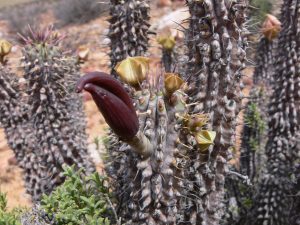Although there are many different weight control aids available on the market today in the U.S. and Canada, few of them have attained the level of recognition that is attributed to the hoodia plant.
 The hoodia plant is a shrub native to certain parts of South Africa, most famously the Kalahari Desert. Today, it is available in various oral doses and used as an appetite suppressant. People who are striving to lose weight often turn to hoodia in order to control cravings, which helps them reduce calorie intake.
The hoodia plant is a shrub native to certain parts of South Africa, most famously the Kalahari Desert. Today, it is available in various oral doses and used as an appetite suppressant. People who are striving to lose weight often turn to hoodia in order to control cravings, which helps them reduce calorie intake.
Most appetite suppressants on the market today are high in fiber. Since fiber has a tendency to expand when it reaches the stomach, this leads to a feeling of fullness that may reduce hunger and desire to eat.
By contrast, the hoodia plant is believed to be rich in chemicals that act more directly on the brain to produce feelings of fullness. As of right now, it is not fully understood exactly what the mechanism of the “fullness feeling” is, or which chemicals work to produce it.
However, it is believed that the P57 molecule found naturally in hoodia acts on the hypothalamus of the brain. The hypothalamus is partially responsible for regulating appetite, and P57 may be a beneficial way to stimulate it.
If so, then the hoodia plant would be valuable in ensuring that people don’t experience “problem cravings” or desire for food that takes place when the body is not actually in need of additional nutrients. This could be valuable in achieving greater self-regulation of the body.
It’s important to know that scientists are still working hard on uncovering the mysteries of hoodia and, as a supplement, it is not strictly regulated in the United States. Hoodia joins a wide range of other appetite suppressants that could be very helpful, along with increased intake of water and fiber!